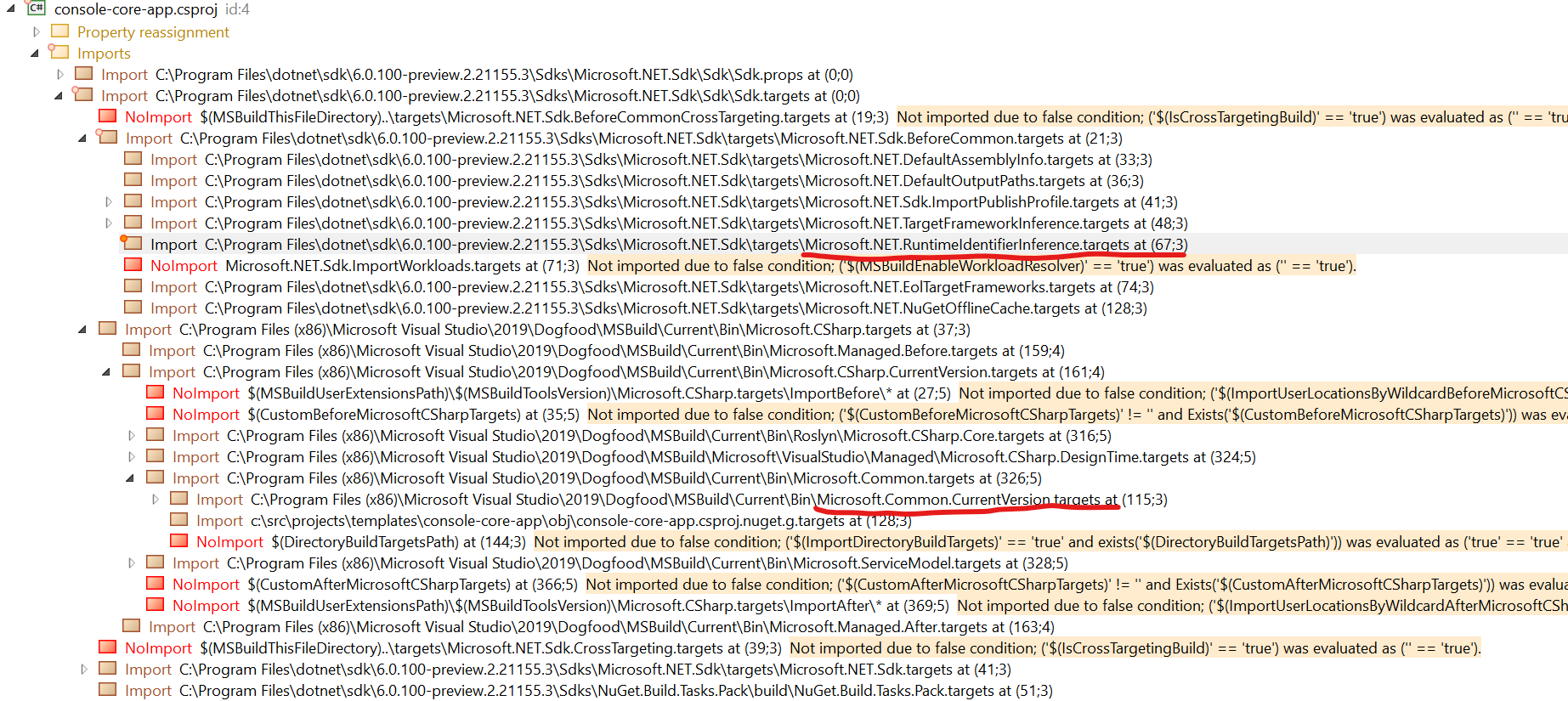Platform vs. PlatformTarget In Any .NET Build
In any given .NET build, you might notice two properties that effectively have the same meaning, Platform and PlatformTarget. But what the heck is the difference between the two, and why does PlatformTarget exist? Let’s go on this journey together.
First of all, PlatformTarget is important because it’s passed to the compiler (among other important tasks)in Microsoft.Common.CurrentVersion.targets but that file does not define PlatformTarget. Weird, right? PlatformTarget being passed to these tasks has existed for 5+ years now, so PlatformTarget isn’t a “recent” concept. It is, however, defined in any .NET Framework project file. The fact that it’s defined in these older projects (based on Configuration|Platform) proves that it needs to be defined either in the project, or in some props/targets file before the CoreCompile target runs (from the Roslyn targets).
This answers how PlatformTarget is set & used in legacy-style projects: PlatformTarget is defined to a specific value when building under a particular Configuration|Platform. It is then passed to the compiler and so on.
This answers how PlatformTarget is set & used in legacy-style projects: PlatformTarget is defined to a specific value when building under a particular Configuration|Platform. It is then passed to the compiler and so on.
What about sdk-style projects?
I found this in Microsoft.NET.Sdk.props
* We cannot just set $(PlatformTarget) to $(Platform) here because $(Platform) can be set to anything
at the solution level, but there are a fixed set valid $(PlatformTarget) values that can be passed
to the compiler. It is up to the user to explicitly set PlatformTarget to non-AnyCPU (if desired)
outside the 1:1 defaults below.
-->
<PropertyGroup>
<_PlatformWithoutConfigurationInference>$(Platform)</_PlatformWithoutConfigurationInference>
</PropertyGroup>
<PropertyGroup Condition=" '$(_PlatformWithoutConfigurationInference)' == 'x64' ">
<PlatformTarget Condition=" '$(PlatformTarget)' == '' ">x64</PlatformTarget>
</PropertyGroup>
<PropertyGroup Condition=" '$(_PlatformWithoutConfigurationInference)' == 'x86' ">
<PlatformTarget Condition=" '$(PlatformTarget)' == '' ">x86</PlatformTarget>
</PropertyGroup>
<PropertyGroup Condition=" '$(_PlatformWithoutConfigurationInference)' == 'ARM' ">
<PlatformTarget Condition=" '$(PlatformTarget)' == '' ">ARM</PlatformTarget>
</PropertyGroup>
It looks like PlatformTarget is set based on Platform when it doesn’t have a value already set, but doesn’t have a definition when Platform is AnyCPU. So what happens when Platform is AnyCPU?
The following snippet looks to answer my question. It defaults PlatformTarget in Microsoft.NET.RuntimeIdentifierInference.targets:
<! - Determine PlatformTarget (if not already set) from runtime identifier. →
<Choose>
<When Condition="'$(PlatformTarget)' != '' or '$(RuntimeIdentifier)' == ''" />
<When Condition="$(RuntimeIdentifier.EndsWith('-x86')) or $(RuntimeIdentifier.Contains('-x86-'))">
<PropertyGroup>
<PlatformTarget>x86</PlatformTarget>
</PropertyGroup>
</When>
<When Condition="$(RuntimeIdentifier.EndsWith('-x64')) or $(RuntimeIdentifier.Contains('-x64-'))">
<PropertyGroup>
<PlatformTarget>x64</PlatformTarget>
</PropertyGroup>
</When>
<When Condition="$(RuntimeIdentifier.EndsWith('-arm')) or $(RuntimeIdentifier.Contains('-arm-'))">
<PropertyGroup>
<PlatformTarget>arm</PlatformTarget>
</PropertyGroup>
</When>
<When Condition="$(RuntimeIdentifier.EndsWith('-arm64')) or $(RuntimeIdentifier.Contains('-arm64-'))">
<PropertyGroup>
<PlatformTarget>arm64</PlatformTarget>
</PropertyGroup>
</When>
<Otherwise>
<PropertyGroup>
<PlatformTarget>AnyCPU</PlatformTarget>
</PropertyGroup>
</Otherwise>
</Choose>
PlatformTarget appears to be set here (if not already set) based off of the RuntimeIdentifier. And to confirm that this all happens before M.C.CV.targets, see the order of imports:

So we know now that PlatformTarget is defined in the sdk in both Microsoft.NET.Sdk.props and Microsoft.NET.RuntimeIdentifierInference.targets.
This answers my question for sdk-style projects: PlatformTarget is defined based on specific values of Platform and RuntimeIdentifier. And defaulted to AnyCPU when Platform isn’t a predetermined value, or it couldn’t be parsed from the RID.
TL;DR
PlatformTarget is derived from Platform in a .NET Framework project file when Platform falls under a set of predetermined values. Otherwise it’s defined in the .NET Sdk based on Platform or RuntimeIdentifier.